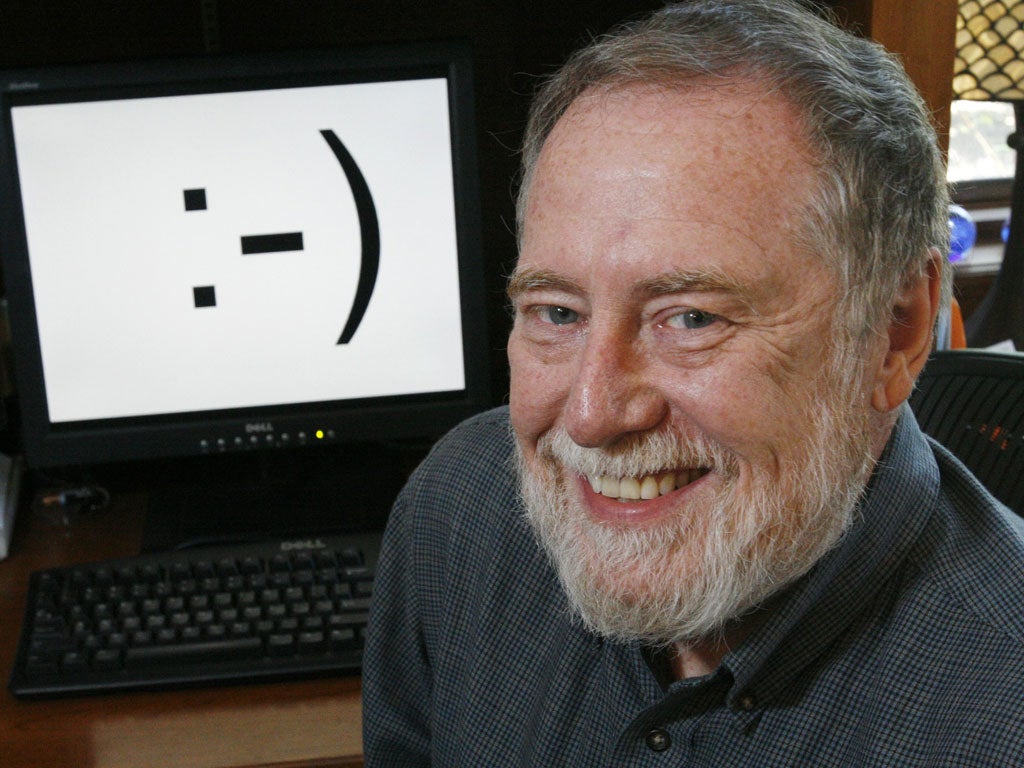Happy 30th birthday emoticon! :-)
A Pittsburgh professor invented the forerunners. He hates the little yellow icons they have become

Your support helps us to tell the story
From reproductive rights to climate change to Big Tech, The Independent is on the ground when the story is developing. Whether it's investigating the financials of Elon Musk's pro-Trump PAC or producing our latest documentary, 'The A Word', which shines a light on the American women fighting for reproductive rights, we know how important it is to parse out the facts from the messaging.
At such a critical moment in US history, we need reporters on the ground. Your donation allows us to keep sending journalists to speak to both sides of the story.
The Independent is trusted by Americans across the entire political spectrum. And unlike many other quality news outlets, we choose not to lock Americans out of our reporting and analysis with paywalls. We believe quality journalism should be available to everyone, paid for by those who can afford it.
Your support makes all the difference.To some, an email isn't complete without the inclusion of :-) or :-(. To others, the very idea of using "emoticons" – communicative graphics – makes the blood boil and represents all that has gone wrong with the English language.
Regardless of your view, as emoticons celebrate their 30th anniversary this month, it is accepted that they are here stay. Their birth can be traced to the precise minute: 11:44am on 19 September 1982. At that moment, Professor Scott Fahlman, of Carnegie Mellon University in Pittsburgh, sent an email on an online electronic bulletin board that included the first use of the sideways smiley face: "I propose the following character sequence for joke markers: :-) Read it sideways." More than anyone, he must take the credit – or the blame.
The aim was simple: to allow those who posted on the university's bulletin board to distinguish between those attempting to write humorous emails and those who weren't. Professor Fahlman had seen how simple jokes were often misunderstood and attempted to find a way around the problem.
This weekend, the professor, a computer science researcher who still works at the university, says he is amazed his smiley face took off: "This was a little bit of silliness that I tossed into a discussion about physics," he says. "It was ten minutes of my life. I expected my note might amuse a few of my friends, and that would be the end of it."
But once his initial email had been sent, it wasn't long before it spread to other universities and research labs via the primitive computer networks of the day. Within months, it had gone global.
Nowadays dozens of variations are available, mainly as little yellow, computer graphics. There are emoticons that wear sunglasses; some cry, while others don Santa hats. But Professor Fahlman isn't a fan.
"I think they are ugly, and they ruin the challenge of trying to come up with a clever way to express emotions using standard keyboard characters. But perhaps that's just because I invented the other kind."
The academic did not kept a copy of his original email and attempts to retrieve it from the university IT system proved unsuccessful.
Then, as the use of emoticons grew, more attempts were made. In 2002, in what the professor describes as a piece of "computer-archaeology", an engineer from Microsoft went through the back-up tapes and, 20 years after it was first sent, the email was retrieved.
Despite his claim to the sideways smiley face, some critics have suggested that the idea had been around before 1982. Professor Fahlman says various people have written to him over the years, claiming they had the idea before him. But he insists he has yet to see any evidence.
However, some people have pointed out that 150 years ago, in an edition of The New York Times in 1862, a transcript of a speech by Abraham Lincoln apparently contained a modern-day ;-). Nerds and conspiracy theorists are still debating whether or not it was a typo.
Join our commenting forum
Join thought-provoking conversations, follow other Independent readers and see their replies
Comments